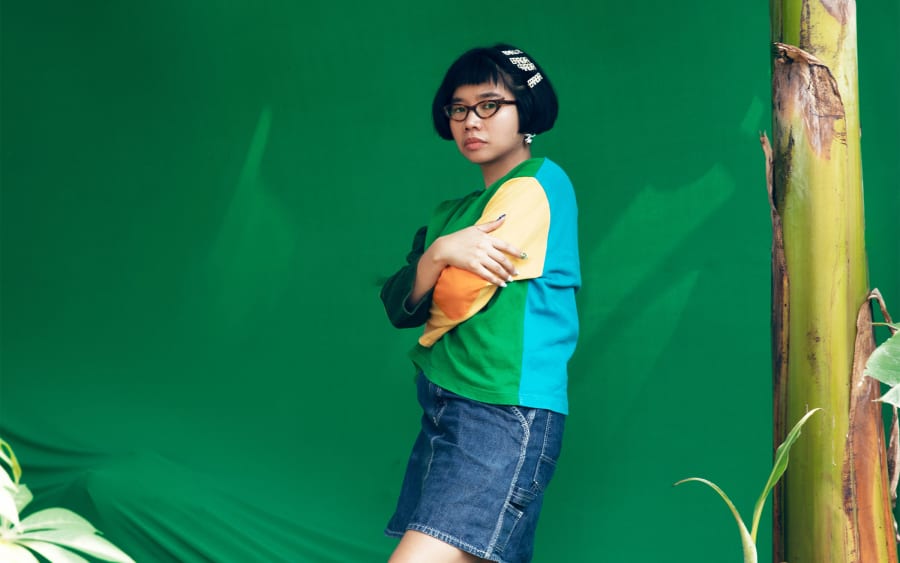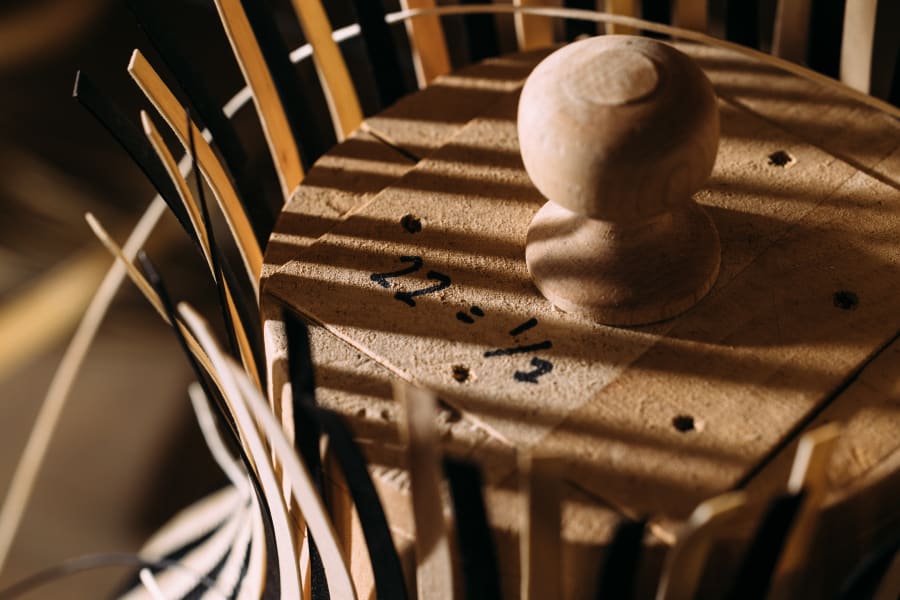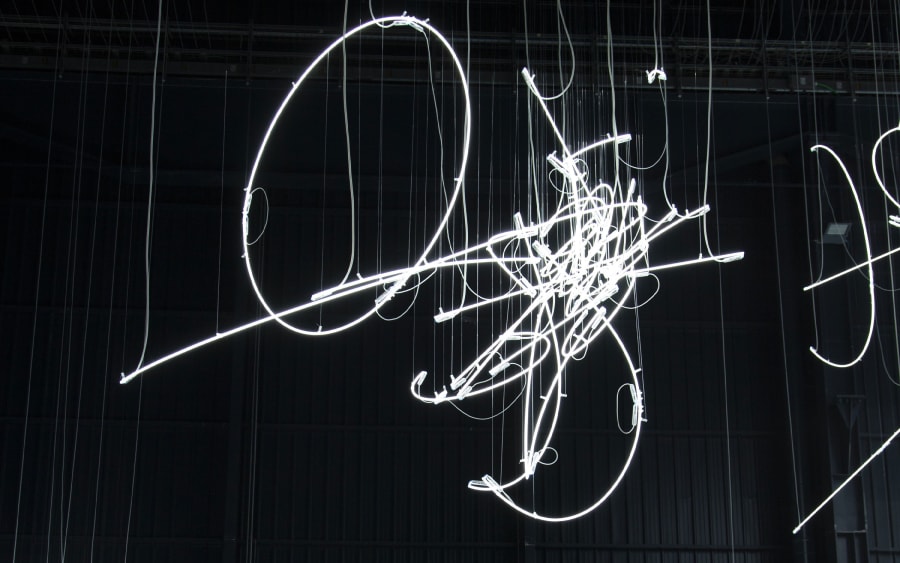Bridget Finn vividly remembers her first Art Basel Miami Beach in 2006, which she attended as part of the Anton Kern Gallery. She was wowed by how the artworld came together under one roof.
‘If you’re a young person working for a gallery, you feel included,’ she says. ‘I was so attracted to this role from a fairly young age.’ The role she refers to is director of Art Basel’s Miami Beach fair, a position to which she was appointed last year. Having come from the gallery world, Finn, 41, says she is sensitive to the needs of dealers for whom the fair is an integral part of their year.
‘Art Basel Miami Beach is the largest art fair in the most robust market in the world,’ Finn says. ‘We have to be very conscious of our position and think very carefully about what we are providing to each stakeholder who participates in the show.’ This year, Finn will preside over a fair with 285 galleries from 38 countries and territories, 34 of which are new to Art Basel Miami Beach. She joins a team of directors that includes Maike Cruse in Basel, Clément Delépine in Paris and Angelle Siyang-Le in Hong Kong.
Noah Horowitz, Art Basel’s CEO, said it helps to have someone leading the fair who has spent so much time in the gallery world. ‘She’s somebody that gallerists feel at ease speaking with in terms of sharing their concerns and ambitions but also understanding how to read certain trend lines,’ Horowitz says. ‘And she’s very close to a younger generation of gallerists that are active today.’
This year, the fair will see an expanded presence of small and midsize galleries in its main sector especially. Horowitz says Art Basel has made a concerted effort to accommodate galleries’ different levels of resources—offering a sliding-scale pricing model for booths, discounts for galleries in its emerging sectors and first-timers in the main sector, as well as introducing a new minimum-size booth option for galleries in the main sector of the Miami Beach show this year. ‘This allows smaller and midsize galleries to sit next to galleries of significantly more means,’ he says.
Because the fair is already a well-oiled machine, Finn shares that the primary goal for this edition was to ‘refine’ the program and ‘tailor the experience a little more’ for new and seasoned visitors.
Meridians, the fair’s sector dedicated to large-scale works, has moved to the south end of the show floor. It is flanked on either side by Positions and Nova, a platform for younger galleries. Finn says it will feel like a ‘sculpture park meets exhibition.’ The gallerist Bridget Donahue, who previously worked with Finn on the former project space Cleopatra’s, says Finn ‘recognizes that galleries are the vital support system for an artist,’ adding, ‘It’s great to see someone like her step up into a larger role.’
To some extent, Finn says, her entire career has led her to this juncture. Raised in Detroit, she attended the College for Creative Studies there, after which she joined Kern’s gallery, having ‘loved the lawlessness’ of his program. While at Kern, she helped start Cleopatra’s, a collective and incubator with Donahue; Erin Somerville, now at White Columns; Kate McNamara, now based in Providence, R.I., and Colleen Grennan, now at Pace in Los Angeles. Cleopatra’s lasted until 2018, later operating a Berlin location spearheaded by Somerville. ‘It was really a labor of love,’ Finn says, ‘and it was a great way to expand our own ideas about what collaboration can be.’
After leaving Kern in 2010, Finn spent three years as the director of strategic planning and projects at Independent Curators International (ICI), where she developed contemporary art programs with leading galleries, museums, auction houses, corporations and philanthropic organizations.
In 2013, she joined Mitchell-Innes & Nash, serving as director of the contemporary art program, learning from the veterans Lucy Mitchell-Innes and David Nash. ‘If I could bottle up all of their stories and expertise, I would be a rich woman,’ Finn says, commending their ‘wealth of knowledge and insights across modern, Impressionist and contemporary art.’ Mitchell-Innes says she was impressed by Finn’s ‘very deep roots’ in the community of emerging artists. ‘She has a real vision of the contemporary gallery scene,’ the dealer says.
In 2017, Finn moved to Detroit to join Terese Reyes in creating the gallery Reyes Finn. ‘It was this opportunity to do what you love in a place that you are from and adore,’ Finn says. ‘Detroit has such a vibrant and unique art scene. People are most familiar with Detroit techno, Motown, rock ’n’ roll. I always think the visual landscape of Detroit’s artists has not necessarily been overlooked but perhaps hasn’t held the same weight as what it’s contributed musically to the rest of the world.’
In 2020, Finn co-founded the citywide exhibition platform Art Mile Detroit, which served the city’s galleries, nonprofits, museums and artist-run spaces during the pandemic. That same year, she gave birth to a daughter who was diagnosed with a rare neurodevelopmental disease, STXBP1.
The experience led Finn to start Flourish, a fundraising effort that included a charity auction at Christie’s that raised $1.3 million to support research for STXBP1 disorders. Donahue said she admired Finn’s fortitude and enterprise in trying to tackle this disease in a systemic way. ‘She’s a great problem-solver,’ Donahue says. ‘You want her on your team.’
Although some worry about a proliferation in the number of art fairs, Finn says, as the leader in the region and industry innovator, Art Basel Miami Beach will continue to draw top collectors, galleries and artists from all over the world as the show leans into what makes it distinctive the world over. ‘Miami Beach holds the singular space as the geographical connector of North and South America,’ she says. ‘You’ll see that reflected on the show floor even more this year, with galleries from a variety of geographic contexts bringing works of astonishing quality. The show is hands-down the most important event of its kind in the Americas.’
This article was originally commissioned for the 2024 issue of the Art Basel Miami Beach Magazine.
Art Basel Miami Beach will take place from December 6 to 8, 2024. Learn more here.
Robin Pogrebin has been a reporter for The New York Times since 1995, where she covers cultural institutions, the artworld, architecture, and other subjects.
Published on November 4, 2024.
Caption for header image: Bridget Finn in Miami Beach, 2023. Photograph by James Jackman for Art Basel.


